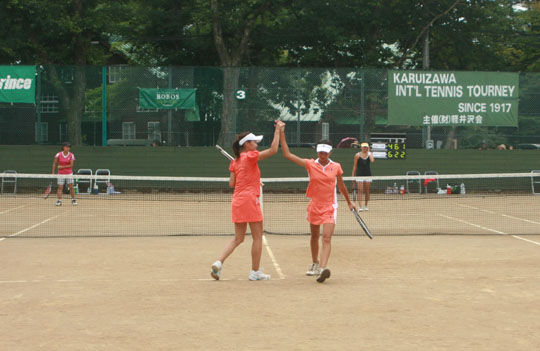If you've ever had a tennis lesson, your coach likely told you to block, rather than swing at your volleys. That knowledge makes it all the more thrilling to watch someone like the athletic 16-year-old Sanae Ota rush in from the back of the court, leap up to a high, floating ball — before it bounces — and smack it back over the net with a full-strength forehand swing.
The stunning, if unconventional, winning shot (which almost knocks the racket from her opponent's hand) prompts the crowd to jump to its feet and roar — and Ota and her doubles partner, Miyuki Hatsukawa, to high-five each other mid-court. Passersby pause outside the court to see what is going on. For a moment, the din of celebration (even though this is still the second set of three, and Ota and Hatsukawa are actually in trouble after losing the first) drowns out all other sounds — including the guitar-playing Christian missionaries across the road. Then the crowd quietens, and all that can be heard is the wind blowing through the giant cedar trees nearby — and those Christians' strummings. Next comes the bounce of the tennis ball, as Ota prepares to serve again.
Welcome to finals day at the 2010 Karuizawa International Tennis Tournament, held each August in the mountain resort of Karuizawa in Nagano Prefecture. Reclining on an old wooden stand and taking in all the action in this restful setting, it's easy to understand how this annual event has become one of Japan's longest-running tennis tournaments. Relax a little more and it even becomes easy to imagine what it must have been like when the tournament began in 1917 and tennis was a flower still coming into bloom in Japan.


















With your current subscription plan you can comment on stories. However, before writing your first comment, please create a display name in the Profile section of your subscriber account page.